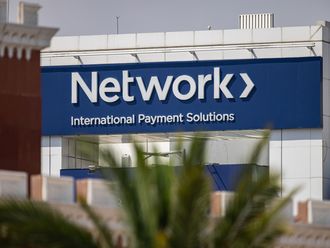Dubai: In April this year, with the economy growing at an annual clip of at least 15 per cent, Qatar's central bank cut key interest rates by at least half a percentage point. In August, as domestic credit expanded at a nearly 20 per cent rate, it cut them again.
Across the six oil-rich economies of the Gulf, central banks are running loose monetary policies that contrast sharply with their strong economic growth.
Saudi Arabia is holding its key interest rate at two per cent, after cutting it to that level during a near-recession in 2009, even though gross domestic product growth has rebounded to a projected 6.2 per cent this year, according to a Reuters poll of analysts.
The United Arab Emirates' repo rate is at one per cent — lower than the troubled Eurozone's benchmark rate — although growth this year is expected to be 3.8 per cent.
Meanwhile, Gulf countries have loosened fiscal policy this year, ramping up social spending to head off social unrest after regime changes elsewhere in the Arab world. Saudi Arabia has announced $130 billion (Dh477.5 billion) of extra spending, which is expected to be spread over several years; while Oman is boosting 2011 budget spending by more than ten per cent from its original plan, and intends to keep spending at a similarly high level next year.
Over the long term, it is a potentially explosive policy mix — and some economists are starting to think Gulf central banks risk storing up trouble for the future, in the form of inflation or asset bubbles.
The International Monetary Fund (IMF) said last month that the region's accommodative monetary policy was still appropriate, but warned that "policymakers should stand ready to adjust fiscal and monetary policies should inflationary pressures or credit bubbles emerge."
"Over the longer horizon, fiscal and monetary policy should be redesigned to enhance the ability to smooth consumption and absorb shocks, safeguard long-term sustainability, and bolster financial stability," the IMF said in its twice-yearly Middle East and North Africa outlook.
The Gulf countries have solid reasons for loose monetary policy. All of them peg their currencies to the US dollar, except Kuwait which bases the value of the dinar on a dollar-dominated basket of currencies.
With the United States keeping its interest rates ultra-low, the Gulf will risk destabilising inflows of speculative ‘hot money' if it lets too big a gap develop with its own rates.
Deeper reason
That seemed to be a motive behind Qatar's rate cuts this year; the August cut came one day after the US Federal Reserve publicly pledged to keep its rates near zero for at least two more years. The Qatari central bank wanted to curb inflows of speculative capital, local media quoted the governor as saying.
But there is a deeper reason for loose policies around the region: unlike economic growth, stock and real estate markets have not recovered from the slump of 2008-09. Dubai's stock market index is near its lowest level since 2004; firms across the Gulf are still struggling to restructure debts after running into trouble in 2009, and analysts say Dubai residential property prices have not finished falling. Weak global markets are also hurting Gulf asset prices.
"If you look at the market performance in the UAE and across the region, whether due to company earnings, political or global risks, we still have depreciation in asset prices. I don't see in the short or mid-term any risk to the loose policies," said Mahdi Mattar, chief economist at CAPM Investment in Dubai. Weak asset prices underline another problem for the central banks. Although all the countries aim to diversify their economies, boost the role of the private sector and reduce their reliance on oil and gas, much or most of this year's growth has been based on high oil prices and government spending.
Below projections
Although growth in bank lending to the private sector hit a 28-month high of 9.2 per cent in Saudi Arabia in August, it is only just recovering from levels below five per cent which prevailed last year. Bank lending growth in the UAE accelerated to at least an 18-month high of 3.5 per cent in September, but that is still below the projected rate of GDP growth.
"One reason that governments have kept interest rates so low currently is because they want to stimulate more bank lending," said Paul Gamble, head of research at Jadwa Investment in Riyadh. "As the banks are not really lending, the effect of very low interest rates is not being transmitted into the economy."
The Eurozone crisis may be worsening the problem. About 50 per cent of cross-border syndicated lending in the Middle East and North Africa has come from European institutions in recent years, said V. Shankar, Standard Chartered's chief executive for Europe, the Middle East, Africa and the Americas. Many European banks are now shrinking their new business.
"What it means for a lot of corporates, who are in good shape, is that they will need to curtail their ambitions," he said.
That may be prompting central banks to keep interest rates extremely low in an effort to stimulate the private sector, even though overall growth in the economy is strong.
So far, with the exception of Oman, where consumer price inflation climbed to a 29-month high of 5.3 per cent year-on-year in August, there is little sign of inflationary pressures building in the Gulf. The latest Reuters analyst poll, in September, predicted Saudi Arabian inflation of 5.1 per cent this year and 5.0 per cent next year — still well below the double-digit rates seen during the oil boom of 2008.











